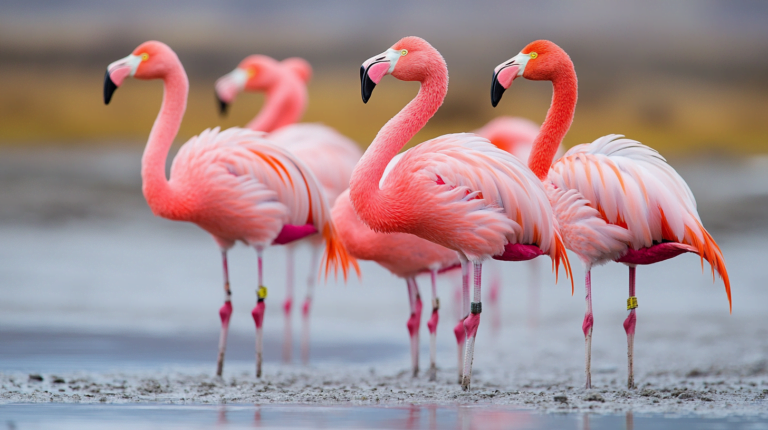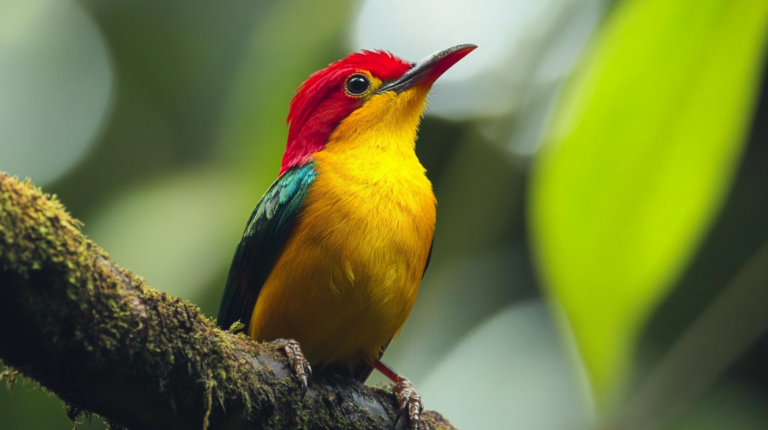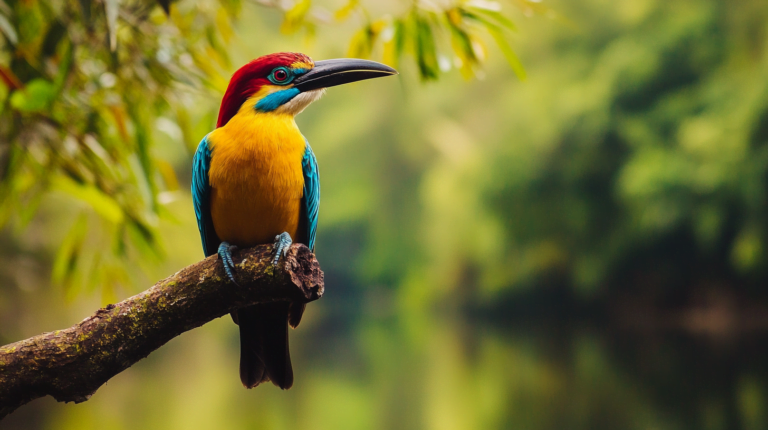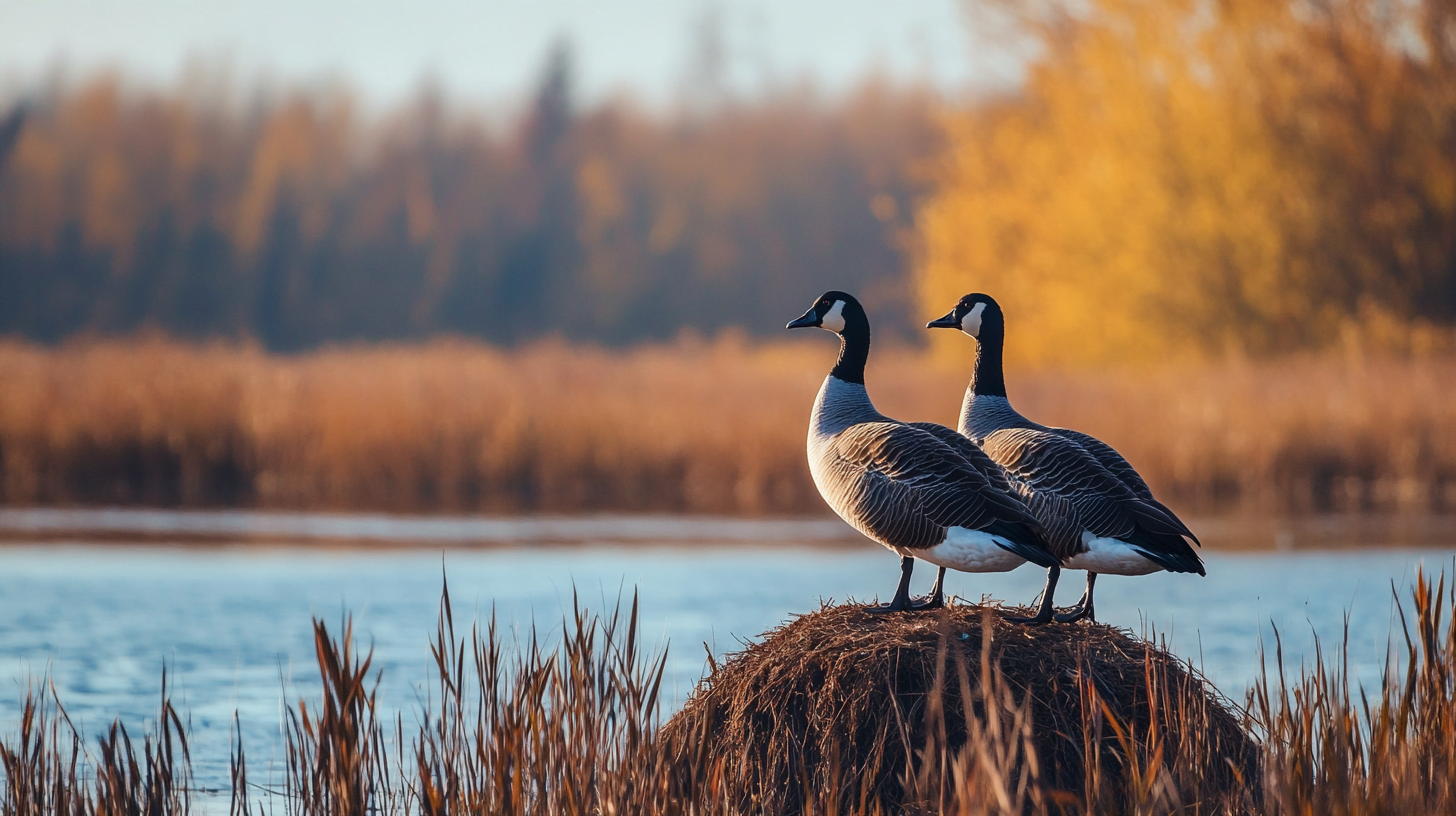
Table of Contents
Canada’s vast and varied landscapes offer a paradise for birdwatchers. From coastal cliffs teeming with seabirds to lush forests echoing with warbler songs, the Great White North is home to an incredible diversity of avian life. In this comprehensive guide, we’ll explore the best birdwatching spots in Canada, helping you plan your next birding adventure in this beautiful country.
Why Canada is a Birdwatcher’s Paradise
Canada’s appeal to birdwatchers isn’t just a happy accident. It’s the result of the country’s unique geography and climate. With over 450 bird species calling Canada home at various times of the year, there’s always something new to discover.
Here’s why Canada stands out:
- Diverse ecosystems: From the Arctic tundra to temperate rainforests, Canada’s varied habitats support a wide range of bird species.
- Migratory hotspots: Canada lies along major flyways, making it a crucial stopover for millions of migrating birds.
- Unique species: Some birds, like the Gray Jay (Canada’s national bird), are found almost exclusively in Canada.
- Vast wilderness areas: Canada’s expansive protected areas provide undisturbed habitats for many bird species.
- Seasonal variations: The dramatic changes in seasons create unique birdwatching opportunities throughout the year.
Top Birdwatching Destinations Across Canada
Let’s dive into some of the best places for birdwatching in Canada. Each spot offers a unique birding experience you won’t want to miss.
1. Point Pelee National Park, Ontario
Known as the “Warbler Capital of North America,” Point Pelee is a must-visit for any serious birdwatcher. This small peninsula jutting into Lake Erie is the first landfall for many migrating birds in spring.
Best time to visit: May, during the spring migration
Notable species: Over 30 species of warblers, including the rare Kirtland’s Warbler
“Point Pelee in May is like watching a rainbow come to life. The variety of colorful warblers is simply breathtaking.” – Jane Smith, veteran birdwatcher
Point Pelee’s unique geography creates a funnel effect, concentrating migrating birds into a small area. This makes it one of the best birdwatching spots in Canada for seeing a high diversity of species in a short time. The park also offers excellent facilities, including boardwalks through marshes and viewing towers.
2. George C. Reifel Migratory Bird Sanctuary, British Columbia
This wetland haven near Vancouver is a year-round birdwatching destination. It’s especially famous for its snow goose migration in fall and winter.
Year-round residents: Great Blue Herons, Sandhill Cranes
Winter spectacle: Up to 80,000 Lesser Snow Geese
The sanctuary’s mix of freshwater marshes, tidal mudflats, and grasslands provides habitat for over 280 bird species. It’s one of the best birdwatching spots in Canada for waterfowl, with 25 duck species regularly observed. The sanctuary also offers guided tours and educational programs, making it an excellent spot for beginner birdwatchers.
3. Cape St. Mary’s Ecological Reserve, Newfoundland and Labrador
For seabird enthusiasts, Cape St. Mary’s is hard to beat. Its sea stacks and cliffs host one of North America’s largest seabird colonies.
Highlight: Northern Gannet colony with over 24,000 pairs
Viewing tip: The ‘Bird Rock’ viewing platform offers close-up views without disturbing the birds
The reserve is home to thousands of Northern Gannets, Common Murres, Black-legged Kittiwakes, and Razorbills. What makes this one of the best birdwatching spots in Canada is the accessibility – you can get within meters of large seabird colonies without a boat. The dramatic coastal scenery adds to the experience, making it a photographer’s dream.
4. Oak Hammock Marsh, Manitoba
This restored prairie marsh is a prime spot for waterfowl and shorebirds. It’s also an important research and education center.
Species diversity: Over 300 bird species recorded
Don’t miss: The fall migration, when thousands of waterfowl gather before heading south
Oak Hammock Marsh is a testament to successful habitat restoration. Once drained for agriculture, it’s now one of the best birdwatching spots in Canada for wetland species. The marsh hosts impressive numbers of migrating geese, ducks, and shorebirds. Its interpretive center offers workshops and guided hikes, making it an excellent place to improve your birding skills.
5. Inglewood Bird Sanctuary, Alberta
Proof that you don’t need to leave the city for great birdwatching, this urban oasis in Calgary offers year-round birding opportunities.
Urban advantage: Easy access and well-maintained trails
Conservation success: Home to several species at risk, including the Least Flycatcher
Inglewood showcases how urban areas can provide valuable bird habitat. Its mix of river, grassland, and forest habitats attracts a diverse array of birds. It’s one of the best birdwatching spots in Canada for combining city visits with nature observation. The sanctuary’s location along the Bow River makes it an important stopover for migrating birds.
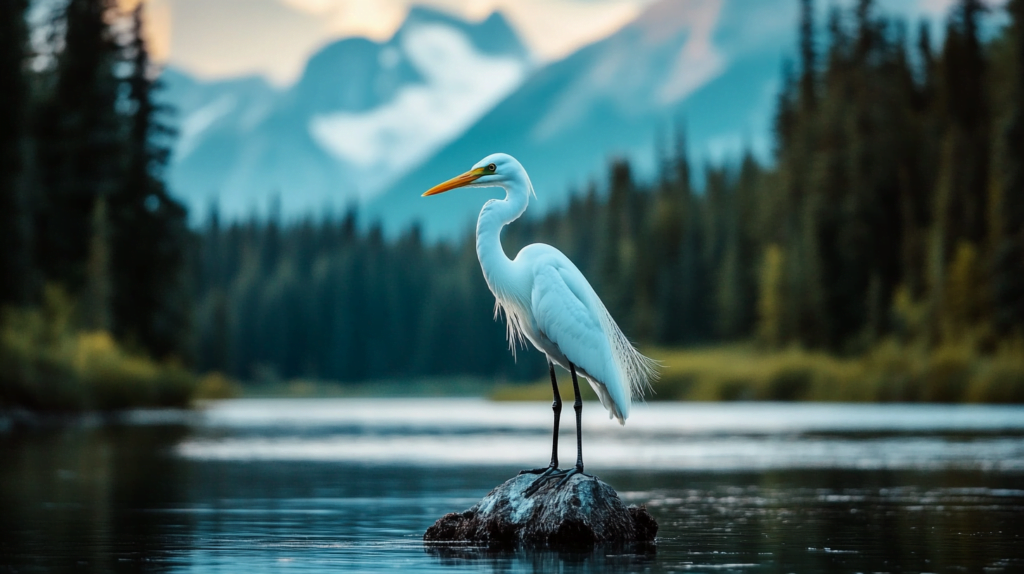
Seasonal Birdwatching Guide for Canada
Birdwatching in Canada changes with the seasons. Here’s what to expect throughout the year:
| Season | Highlights | Best Locations |
|---|---|---|
| Spring | Warbler migration | Point Pelee, ON; Long Point, ON |
| Summer | Breeding birds | Grasslands National Park, SK; Wood Buffalo National Park, AB |
| Fall | Waterfowl migration | Oak Hammock Marsh, MB; Quill Lakes, SK |
| Winter | Arctic species | Churchill, MB; Boundary Bay, BC |
Spring: A Burst of Color and Song
Spring is arguably the most exciting time for birdwatching in Canada. As the snow melts and temperatures rise, millions of birds return from their southern wintering grounds. This is the best time to see colorful warblers, thrushes, and other songbirds.
Key species to watch for:
- Magnolia Warbler
- Scarlet Tanager
- Rose-breasted Grosbeak
Summer: Breeding Season in Full Swing
Summer is when resident birds are busy nesting and raising their young. This is a great time to observe breeding behaviors and see fledglings taking their first flights.
Key species to watch for:
- Common Loon
- Piping Plover
- Bobolink
Fall: The Great Migration South
Fall migration can be just as spectacular as spring, with large flocks of waterfowl and shorebirds gathering before their journey south. This is also when you might spot some rare vagrants blown off course.
Key species to watch for:
- Snow Goose
- Sandhill Crane
- American Golden-Plover
Winter: Hardy Residents and Arctic Visitors
While many birds leave Canada for the winter, some hardy species stick around. Winter is also when some Arctic species move south, providing unique viewing opportunities.
Key species to watch for:
- Snowy Owl
- Pine Grosbeak
- Bohemian Waxwing
Essential Gear for Canadian Birdwatching
To make the most of your birdwatching experience in Canada, you’ll need the right equipment:
- Binoculars: 8×42 or 10×42 are versatile choices for most conditions
- Field guide: “The Sibley Field Guide to Birds of Eastern North America” and its Western counterpart are excellent
- Weather-appropriate clothing: Layered clothing, waterproof boots, and sun protection are essential
- Camera: For those who want to capture their sightings
- Notebook: To record your observations
- Spotting scope: For distant waterfowl or shorebirds
- Bird identification app: Apps like Merlin or eBird can be helpful in the field
Investing in quality gear can significantly enhance your birdwatching experience. Good binoculars, in particular, are crucial for enjoying the details of bird plumage and behavior.
Birdwatching Ethics and Conservation in Canada
As you enjoy Canada’s birds, it’s crucial to practice responsible birdwatching:
- Respect habitats: Stay on designated trails and don’t disturb nesting areas
- Keep your distance: Use binoculars or a spotting scope instead of getting too close
- Support conservation: Consider joining organizations like Bird Studies Canada
- Follow local regulations: Some areas may have specific rules to protect sensitive species
- Educate others: Share your knowledge and enthusiasm for birds with others
Remember, the goal is to observe birds in their natural habitat without causing stress or disruption. By following these guidelines, you help ensure that Canada remains one of the best birdwatching spots for future generations.
Case Study: The Success of Project FeederWatch
Project FeederWatch, a joint program between Bird Studies Canada and the Cornell Lab of Ornithology, showcases how birdwatchers can contribute to conservation efforts.
Key facts:
- Started in 1976
- Over 20,000 participants across North America
- Data used in over 100 scientific publications
This citizen science project has helped track long-term trends in bird populations, providing valuable data for conservation efforts. Participants count birds at their feeders from November to April, contributing to a vast database of bird distribution and abundance.
The project has led to important discoveries, such as the northward range expansion of Anna’s Hummingbird and the decline of Evening Grosbeaks. It’s a perfect example of how amateur birdwatchers can contribute to scientific understanding and conservation.
Tips for Beginner Birdwatchers in Canada
If you’re new to birdwatching, Canada’s diverse avian life might seem overwhelming at first. Here are some tips to get you started:
- Start in your backyard: Many of Canada’s common birds can be seen right at home
- Join a local birding group: Experienced birders are often happy to share their knowledge
- Learn bird calls: Many birds are heard before they’re seen
- Keep a life list: Recording the species you’ve seen can be rewarding and motivating
- Be patient: Birdwatching takes practice, but the skills come with time
Remember, every expert birder was once a beginner. Don’t be afraid to ask questions and learn from others in the birdwatching community.
Unique Birdwatching Experiences in Canada
Beyond the typical birdwatching excursion, Canada offers some truly unique birding experiences:
- Owl prowls in Algonquin Provincial Park, Ontario: Join nighttime expeditions to spot and hear various owl species
- Puffin viewing in Witless Bay Ecological Reserve, Newfoundland: Watch adorable Atlantic Puffins nesting on offshore islands
- Crane spotting in Cypress Hills Interprovincial Park, Saskatchewan: Witness the elaborate courtship dances of Sandhill Cranes
- Eagle watching on the Squamish River, British Columbia: See hundreds of Bald Eagles gathering to feed on salmon
These experiences showcase why Canada is considered one of the best birdwatching spots globally, offering opportunities to see birds in unique and spectacular settings.
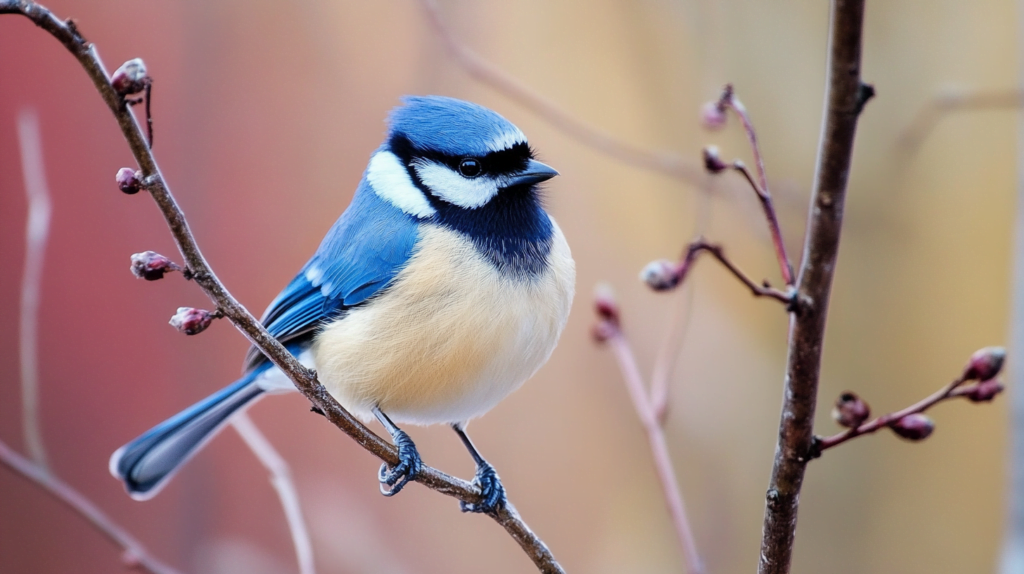
Conclusion
From the warbler-filled forests of Point Pelee to the seabird colonies of Cape St. Mary’s, Canada offers some of the best birdwatching spots in the world. The country’s vast wilderness areas, diverse ecosystems, and position along major migratory routes make it a paradise for bird enthusiasts of all levels.
Whether you’re marveling at the spectacle of thousands of Snow Geese taking flight at Oak Hammock Marsh, listening to the haunting call of a Common Loon on a misty lake in Ontario, or spotting a rare vagrant at Point Pelee, birdwatching in Canada offers endless opportunities for discovery and wonder.
Remember to always practice ethical birdwatching, respecting the birds and their habitats. By doing so, you’ll not only enhance your own experience but also contribute to the conservation of Canada’s incredible avian diversity.
So grab your binoculars, pack your field guide, and set out to explore the wonderful world of Canadian birds. Who knows? Your next birdwatching trip might lead you to a life-changing encounter with a rare species or a breathtaking display of nature in action. Happy birding in the Great White North!
